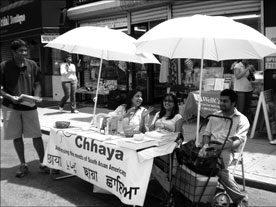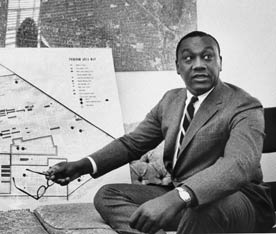The convergence of these factors led to a growing awareness that needs of ethnic communities were not always met under the existing traditional community-development paradigm. Immigrants’ unfamiliarity with the legal system and lack of knowledge about civil rights left them vulnerable to fair-housing violations and employment discrimination. Linguistic and cultural barriers prevented many from seeking help, accessing social services, and obtaining government benefits.
Traditional community development corporations rarely had the staff capacity to do this brand of outreach. The more basic needs such as obtaining a Social Security card, filling out immigration paperwork, and enrolling children in school, fell outside the housing-construction and preservation scope of established CDCs.
EBCDCs emerged in the early 1970s to serve a variety of ethnic populations all over the country. Their reach and diversity are apparent in the membership of groups like the National Coalition for Asian Pacific American Community Development, an umbrella organization for ethnic-based CDCs. Its partners hail from places such as San Francisco, Los Angeles, New Orleans, Philadelphia, Seattle, Washington, D.C., and Kailua, Hawaii, serving Chinese, Korean, Filipino, Japanese, Vietnamese, Thai, Indian, Pakistani, Bangladeshi, and other communities. (Although the United States is considered the most popular destination for immigrants, the EBCDC movement is not unique to this country. Black and minority ethnic housing associations have existed in Great Britain since the late 1980s.)
The shift from a place-based to a people-based definition of community did not necessarily represent a sharp break with contemporary practice. For some organizations, there was considerable overlap between the two.
AAFE grew out of a 1974 protest against employment discrimination at a Chinatown construction site in New York City. The high concentration of Chinese and other immigrants in the neighborhood created a logical base for its operations. In its early years, the organization focused on fighting illegal sweatshop raids, harassment of garment workers, and abusive landlords in Chinatown. Eventually, AAFE expanded its role to include housing and economic development to serve clients of any nationality throughout the city. In 1996, the organization opened a second office in Flushing, Queens, which is home to a large Chinese population, and also significant numbers of Koreans and South Asians.
While working for AAFE in the late 1990s, Seema Agnani, Chhaya’s founder, and other advocates started talking about forming an organization dedicated to the development of the South Asian community. Vanitha Venugopal, director of housing at the Queens borough president’s office at the time, and a founding member of Chhaya CDC, says, “I saw first-hand that residents from our community had no knowledge of basic housing information whether they were renters or homeowners. They lacked a basic understanding of issues such as zoning, rent regulations, [or] their rights to decent and safe housing. [A]s a result [they] paid too much in rent, lived in poor conditions…, or faced eviction because they did not know how to seek help.”
Venugopal, now a program officer with the Surdna Foundation, says, “Residents from our communities were not aware of the network of assistance organizations that existed. Even if they were aware of these organizations, language and other social barriers held them back from seeking assistance.”
Initially, Agnani’s idea was to expand AAFE’s services to meet the needs of the South Asian population living in Chinatown and the Lower East Side. Progress occurred in fits and starts, mostly because employee turnover made it difficult to maintain translation services and establish permanent programs. She consulted with local leaders about ways to best serve the community, and in October 2000, with the support of AAFE, formed Chhaya CDC as an independent organization. (Chhaya means “shelter” in several South Asian languages.)
Chhaya CDC’s objectives are: 1) To develop ways to meet the need for housing assistance and social services through partnerships, legal assistance, tenant advocacy, education and outreach on housing rights and opportunities; 2) To encourage the South Asian community to participate in the planning of their communities; 3) To bring together leaders to form a clearer picture of community-development and social service needs; and 4) To foster understanding within South Asian and other immigrant communities of how civic institutions function and can be used to further socioeconomic development.
The choice to serve an entire population, instead of a single neighborhood, was a deliberate one. “Because the community is so spread out, there is no single neighborhood base. It was a very conscious decision that we made to call ourselves a citywide group,” says Agnani.






Comments